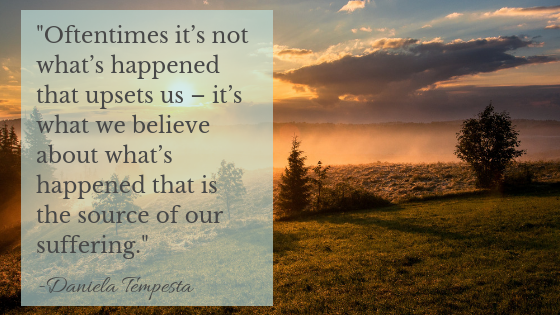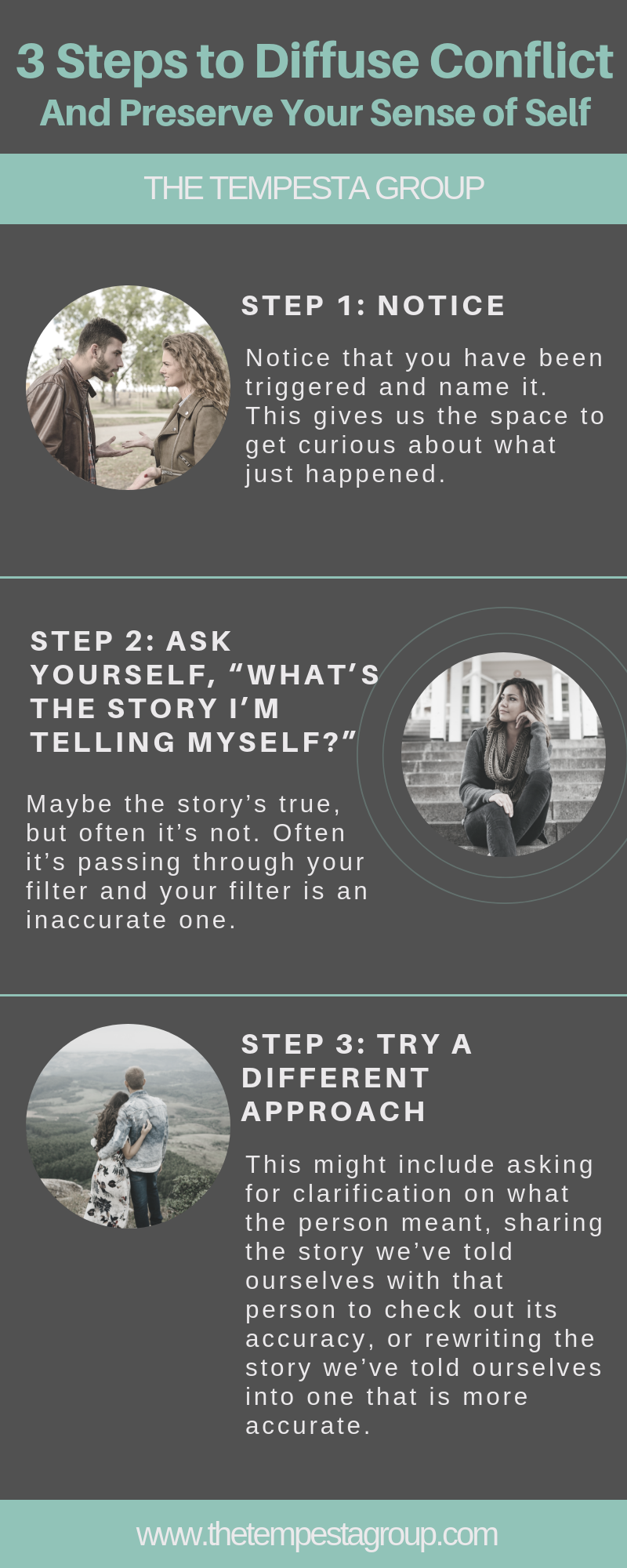One of my clients recently told her boyfriend that she wanted to make an effort to spend more time with her friends. He became very angry. Why? Because what he heard was, “I don’t value spending as much time with you, and I really want to spend more time with these other people who I do value.” Hence, the anger. My client was flustered and confused by his hostility and became defensive. Unnecessary conflict ensued. In a matter of seconds an innocent comment turned into the demise of a Tuesday night.
What happened here? This a great example of how often it’s not what’s happened that upsets us – it’s what we believe about what’s happened that is the source of our suffering.
In this example, it was something my client said that upset her boyfriend. But it doesn’t always have to be something someone says to us. It can be anything that someone else does (a look, not responding to a text, etc) that triggers something in us. Then we create a story about what that means, and we have a reaction to that story.
Fortunately, there are 3 steps that we can take to change this process:
Step 1: Name it in the moment. Notice that you have been triggered and name it. This gives us the space to get curious about what just happened.
Step 2: Ask yourself, “What’s the story I’m telling myself about what just happened?” Maybe the story’s true, but often it’s not. Often it’s passing through your filter and your filter is an inaccurate one.
Step 3: Try a different approach. Once we notice that we’ve been triggered and identify the story we created we can choose to respond in a different way. This might include asking for clarification on what the person meant, sharing our interpretation with that person to check out its veracity, or rewriting the story we’ve told ourselves into one that is more accurate.
Allow me to elaborate further on Step 3. Oftentimes we don’t even hear what the other person said fully, because we’re so busy running with the story in our heads that we miss it. It’s helpful to actually ask the person to repeat what they said to make sure we’re getting the message right. Additionally, we can explain our interpretation of what just happened and see if we’re correct.
So my client’s boyfriend could have said something like “when I heard you say you want to spend more time with your friends, the story I told myself was that this was because you wanted to spend less time with me. Is that accurate?” A response like this would have elicited the following response from my client – “actually quite the opposite. I so value spending time with you that I have been neglecting my friends, and I feel a bit guilty about that.” What she meant is so different than what he heard.

But if we’re not able to go back and check with that person, then this is our opportunity to rewrite the story. We can say to ourselves, “I don’t know that this is true. I may be writing a story. What would be an alternate explanation? What would be a different ending to the story that is more empowering to me and that makes me feel safe and OK?”
So my client’s boyfriend might say to himself, “My girlfriend does want to spend more time with her friends, but our relationship is solid, and I have nothing to worry about.” He would be going back and changing the story to something that is probably closer to its original intention.
I hope that you can take this tool and apply it to situations in your life where you’re experiencing unnecessary conflict or where you’re having emotional reactions to things that are unnecessary.
I’d love to hear some examples of how you’re trying this out in your life, so feel free to share with me on our Facebook page or in the comments.
Watch the video below:
Get the Infographic:



